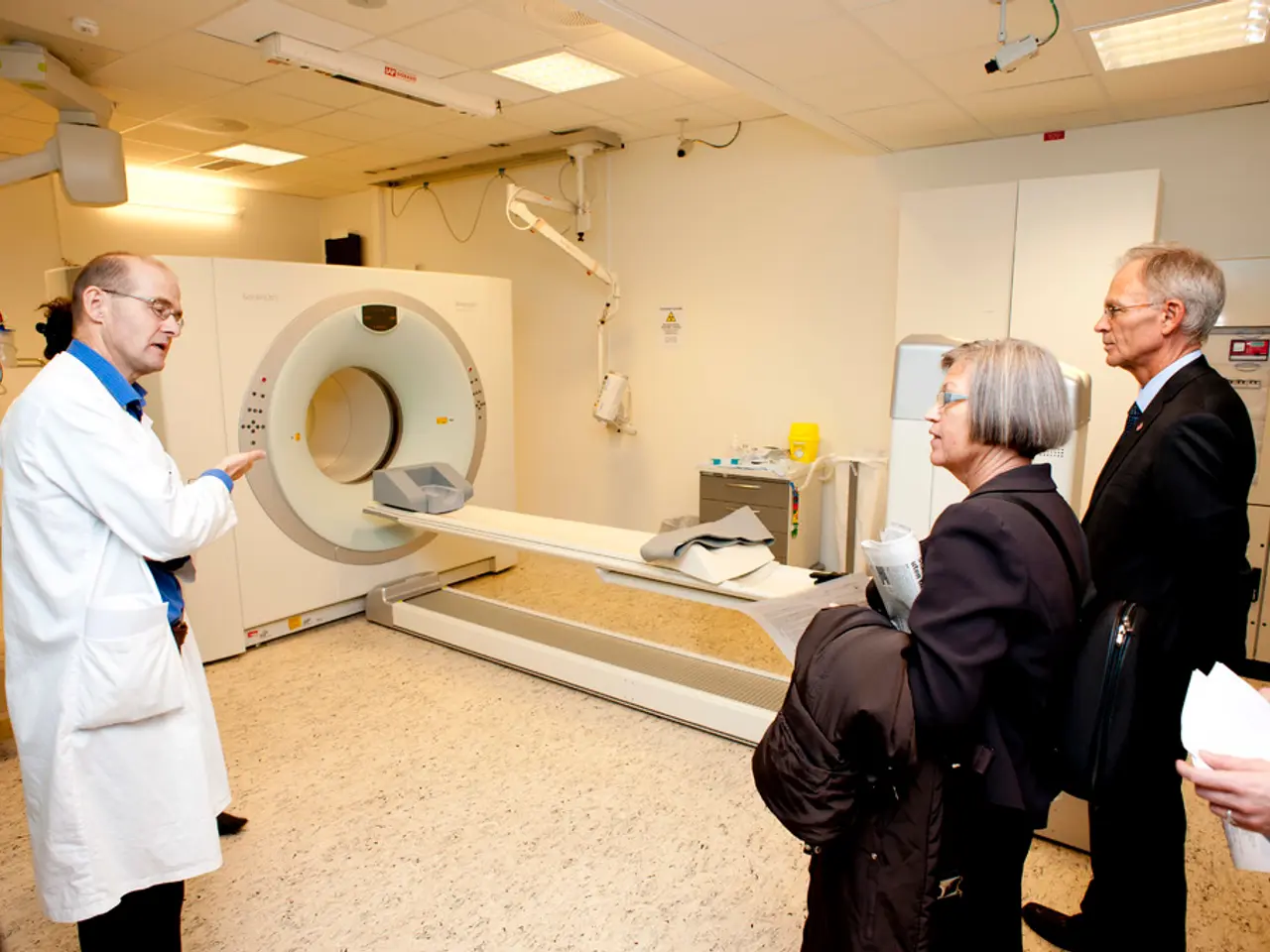People with paralysis now have the ability to operate robots using only their thoughts
In recent years, groundbreaking advancements in Brain-Computer Interface (BCI) technologies have been made with the aim of restoring movement and independence for individuals with quadriplegia. These advancements span both invasive and non-invasive approaches, with a focus on real-world usability, safety, and broader societal impact.
One of the most promising developments is the use of thought-controlled robotic avatars. In a multinational trial, 19 volunteers, including 9 people with complete paralysis, used brainwave-reading caps to control small, wheeled robots. The control method for the system is customizable, allowing users to initiate movement commands with their mind, press buttons with their head or body, or use a hybrid method.
The robot on wheels acts as the user's avatar, complete with a screen displaying their face, a camera showing the robot's surroundings, and an autonomous driving system to help avoid obstacles. With this technology, paralyzed individuals can navigate complex spaces and interact with people in real-time, without lifting a finger.
The signals are analyzed by a computer and transformed into movement commands, which are sent over the internet to a remote location. The emotional and psychological impact of the technology is profound, allowing paralyzed individuals to rejoin the world. The interface reads pure brain activity and translates it into action, unlike other assistive technologies that require physical movement or voice commands.
China has emerged as a leader in invasive BCI innovation, developing coin-sized devices with ultra-flexible neural electrodes that are implanted via minimally invasive surgery into a thinned area of the skull. These devices translate neural signals into digital commands, enabling patients to control external devices purely through thought.
Biomimetic tissue interfaces have become a major research focus, employing soft, biocompatible materials and even living cell layers at the brain-device junction to improve integration and reduce immune rejection. These “bioactive” electronics aim to mimic native tissue properties, promoting seamless communication between the brain and the device while supporting tissue regeneration.
Battelle’s research highlights a shift toward non-invasive methods, such as using electromyography (EMG) to detect residual muscle activity in paralyzed limbs. A specialized sleeve amplifies these faint neural signals, allowing intention to move to be captured without surgery.
The world becomes accessible not just in theory, but in real-time practice through the use of these technologies. As BCIs become more accessible, they may reshape labor markets, education, and social interactions, creating both opportunities and challenges related to privacy, equity, and the digital divide.
Regulatory milestones in the U.S., such as FDA Breakthrough status and 510(k) clearance for 30-day use of certain BCIs, indicate progress toward fully implantable systems for communication and mobility restoration. China has opened its first BCI clinical ward dedicated to research and trials, signaling a move toward broader clinical adoption.
Global standards development is underway, with workshops focused on technical safety and diverse application scenarios, aiming to ensure that BCIs are both safe and broadly beneficial. The potential implications of BCI technologies extend far beyond medical rehabilitation, with possibilities in industrial safety, human-machine integration, economic and social transformation, and standardization and global collaboration.
In conclusion, the latest BCI advancements for quadriplegic navigation combine cutting-edge hardware, biomimetic materials, and non-invasive sensing to restore independence and communication. The question of whether the technology will become part of everyday life for those who need it most is a question for policy-makers, insurance providers, tech companies, and society as a whole. Insurance companies may need to help finance these technologies for them to become widely available. The use of thought-controlled avatars could represent a paradigm shift in how humans experience space and presence, and it is up to us as a society to prioritize making it accessible.
- The use of thought-controlled robotic avatars, along with advances in science and technology, has the potential to transform health-and-wellness by offering increased independence for individuals with medical-conditions such as quadriplegia.
- As global standards for Brain-Computer Interface (BCI) technologies continue to evolve, particularly in areas like safety and real-world usability, the impact of such advancements on sectors beyond medical-conditions, such as industry, human-machine integration, and social transformation, may soon become a reality.




